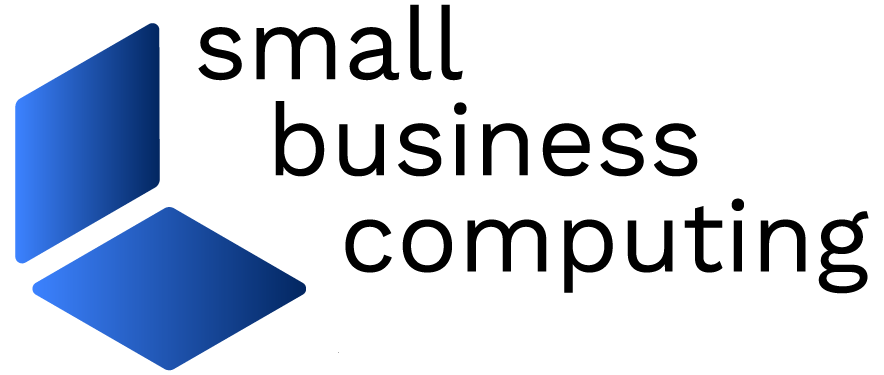By Eric Grevstad
Sure, some Mac fans act like snobs who’d rather die of thirst waiting for Evian than drink domestic Poland Spring, but you have to give Apple credit: It knows style, and it’s willing to sacrifice for style. On first seeing Apple’s iMac, everyone marvels at its smoothly swiveling, tilting, height-adjustable LCD. We mentioned it in a meeting with a monitor vendor this week, and a product manager admitted she’d love to match Apple’s mounting arm, but it’d mean a $100 higher price for a feature buyers use the first day or two before leaving the screen in their favorite working position.
That’s why, despite the TV commercials that show it somersaulting over an iMac, the new Gateway Profile 4 looks less like an iMac-style seamless fashion and lifestyle statement than, well, a really nice LCD monitor with a notebook PC glued to its back. But it’s the sleekest and sharpest of the all-in-one desktops Gateway’s pioneered since the first Profile in 1999, and – for everyone except avid gamers, who’ll condemn its merely adequate, nonupgradeable graphics – a compact, fast desktop space-saver and capable, likable PC.
Everything Except Recordable DVD
The Profile 4 starts at $999 for a model with a 15-inch LCD, 1.7GHz Celeron, and 128MB of DDR memory; Gateway brags that’s less than the $1,199 iMac, though matching the latter’s 40GB hard disk and CD-RW (versus 20GB and CD-ROM) actually brings the Profile to $1,129.
At the opposite extreme, the Profile 4XL is $1,999 with a 17-inch flat panel, 2.66GHz Pentium 4 (with 533MHz bus), a hefty 512MB of DDR and 120GB hard disk, and DVD-ROM/CD-RW combo drive; our test unit was made even more top-of-the-line ($2,159) by an upgrade to Intel’s fastest 2.8GHz Pentium 4. That’s double the memory and half again the hard disk of Apple’s $1,999 17-inch iMac, but the Profile is not available with the latter’s DVD-R drive – at least not for now; we know slimline DVD burners are coming to notebooks this holiday season and hope Gateway’s engineers can squeeze one into the 4XL.
As of now, we think the best deal is the middle Profile 4X model, which offers the larger (1,280 by 1,024-pixel) LCD, a CD-RW drive, 40GB hard disk, 256MB of DDR, and more-than-fast-enough 2.4GHz (533MHz bus) Pentium 4 for $1,499.
There’s nothing to match the elegance of Apple’s iPhoto and iMovie software, but Windows XP Home Edition, Microsoft Works Suite with Word 2002, and starter editions of Roxio Easy CD Creator 5, InterVideo WinDVD, and Symantec Norton AntiVirus are preinstalled, with a copy of The Sims in the box. Stepping up from Works Suite to Office XP Small Business Edition adds $129.
Setup is as simple as lifting the 23-pound system out of the box (which you may do upside down, picking it up by its horseshoe-handle stand or base); finding a 16.6 by 7.9-inch space on your desk for it (it stands 18.2 inches high); and plugging in the PS/2 keyboard, USB mouse, and power cords. The result is a black-and-silver showpiece that’ll look fine on any desk, and even finer in untraditional places like a living room corner or kitchen counter; you can save a bit of desk space by stashing the keyboard partly under the monitor when not computing, and be grateful that the ubiquitous Intel Inside and Microsoft Windows stickers are almost out of sight on the base instead of in your face on the monitor bezel.
Frankly, the cords and cables partly spoil the Profile 4’s sleek stance, especially the hefty, ungainly power brick located at the midpoint of its AC cord; you can put the latter on the floor, but the one-piece PC cries out for a cordless keyboard and mouse. On the positive side, the Logitech USB optical mouse with scroll wheel glides more smoothly than cheap PCs’ mechanical mice, and Gateway’s Millennium Keyboard has a comfortable, soft touch with handy volume and multimedia control buttons and programmable program or Web-site launch keys.
Compared to the highly mobile iMac screen or even most tilt-and-swivel monitors, the Gateway’s 17-inch LCD is stuck fast – you can tilt it up or down (mostly down) through a relatively small angle, but can’t adjust its height, and the only way to swivel is to shove the entire system around.
But the display is crisp and bright, with no bad pixels and a wide viewing angle (although we had to turn the brightness all the way up to see every shade in our DisplayMate test patterns). A convenient one-touch button adjusts image size, centering, and phase; other buttons let you tweak brightness and contrast or manually set the position and color temperature. Very small text looked a bit fuzzy, as did switching from the native 1,280 by 1,024 to 1,024 by 768 resolution, but normal applications and icons looked great – like many LCDs we’ve seen, actually better at the default 60Hz refresh rate than when manually pushed to 70Hz or higher.
The stereo speakers flanking the front-and-center floppy and DVD/CD-RW drive stack sound as good as any two-piece system we’ve heard, though bass suffers from the lack of a subwoofer; headphone and microphone jacks are conveniently up front. A single PC Card slot on the right side is the Profile’s only expansion option, since it has no PCI or AGP slots, but we’re hard pressed to imagine a use for it other than maybe a wireless network card, since the system has plenty of ports for external drives or other options.
Two USB 2.0 and two 1394 FireWire ports are at the right below the PC Card slot, while four more USB 2.0, PS/2 mouse and keyboard, parallel, serial, VGA monitor-out, 56Kbps modem, and 10/100Mbps Ethernet ports are at the rear, along with line-in and -out and microphone jacks.
Removing some screws lets you open the Profile’s back and get at the removable Western Digital WD1200BB hard disk, floppy and optical drive (Toshiba’s SD-R2212, an 8X DVD and 16/10/24X CD-RW) stack, and two DDR266 DIMM module sockets (maximum memory 1GB).
Sizzling CPU, Sedate Graphics
But without an AGP slot, the Gateway is stuck for life with its onboard 32MB Nvidia GeForce2 MX400 graphics controller. Now, the latter is an adequate performer, much faster than suitable-for-word-processing integrated chipsets like Intel’s 845GL – we saw a perfectly playable 64 frames per second in the Quake III Arena benchmark in High-Quality 1,024 by 768 mode (along with 100 fps at 800 by 600 and a more borderline 38 fps at 1,280 by 1,024). However, hardcore gamers will find it behind the times compared with the likes of Nvidia’s GeForce4 MX or ATI’s Radeon 9000, let alone top-end 3D accelerators; its 3DMark 2001 SE Pro score was a lackluster 2,901.
The aging GeForce2 MX is a particularly odd match for our test system’s damn-the-torpedoes 2.8GHz Pentium 4; Intel’s flagship chip powered the Profile 4 to the highest PCMark 2002 benchmark numbers we’ve seen, with a CPU score of 6,781; memory score of 5,296; and hard disk score of 1,101 (the last a triumph for the 7,200-rpm Western Digital 120GB ATA/100 hard disk). The Gateway’s SysMark 2002 application benchmark score was a titanic 239, with 171 in Office Productivity balanced by a stupendous 334 in the P4-friendly Internet Content Creation test.
We love a surreally snappy PC as much as anybody, but as mentioned, we’d gladly settle for a 2.4GHz or 2.53GHz Pentium 4 performance rather than pay hundreds more for 2.8GHz bragging rights. The Profile 4 isn’t about desktop speed records, it’s about compact design and one-piece convenience (and, even with its handsome 17-inch LCD, we think it’s more competitive at $1,499 than at over $2,000).
But sanely configured and approached with sane expectations – no, it’s not as expandable as a larger desktop with PCI and AGP slots, nor quite as stylish as an iMac– the Profile 4 is a nifty, desk-space-saving, good-looking, good-performing PC. If ordinary beige and black boxes leave you cold, check it out.
Pros: Handsome design, elegant 17-inch LCD monitor; plenty of connection ports and CPU and hard disk performance.
Cons: Some clunky touches like AC adapter brick and nonswiveling stand; DVD recorder not available; GeForce2 MX graphics will disappoint 3D gamers.
Reprinted from hardwarecentral.com.

